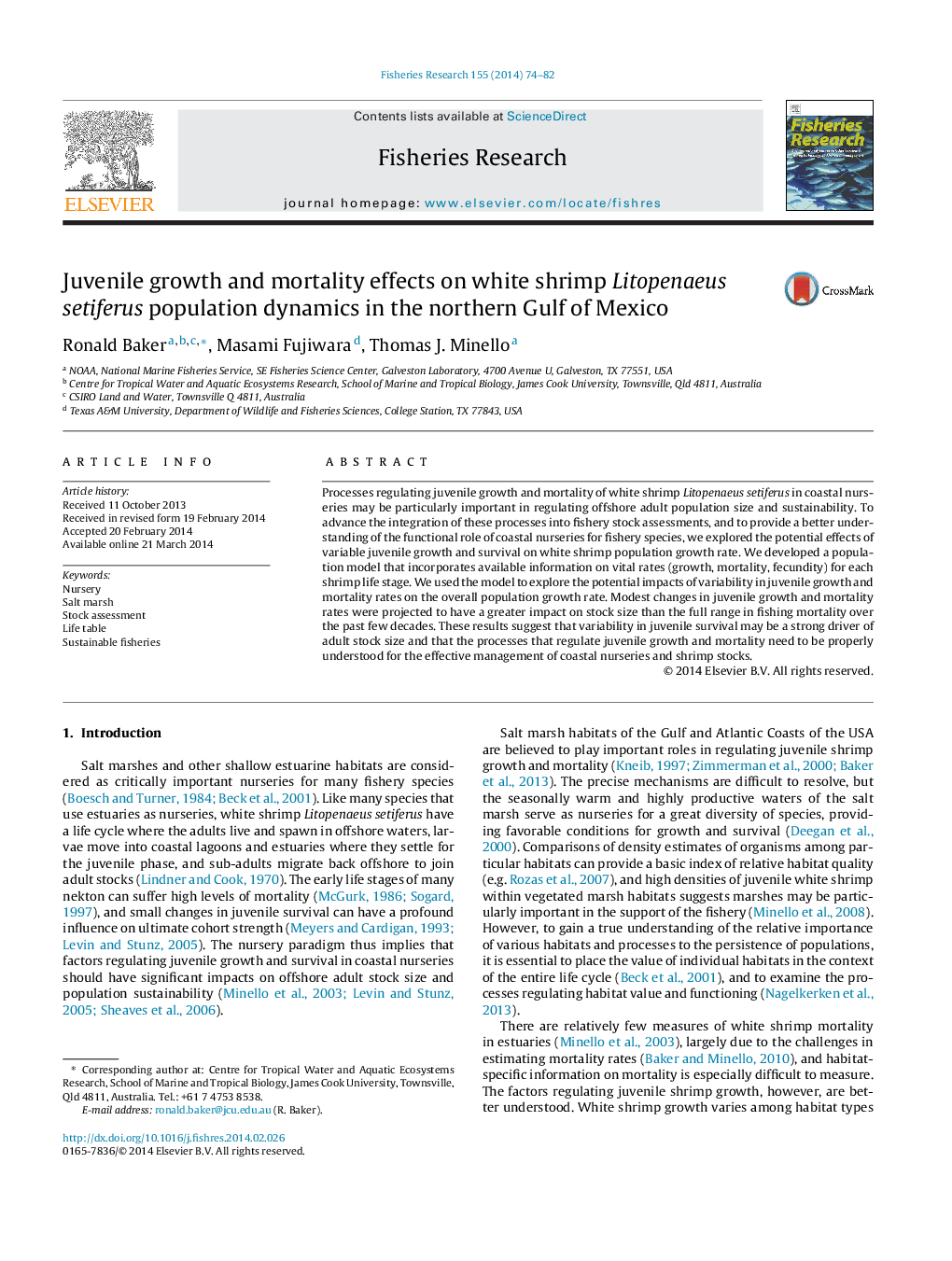| Article ID | Journal | Published Year | Pages | File Type |
|---|---|---|---|---|
| 4542949 | Fisheries Research | 2014 | 9 Pages |
•We modeled the effects of variable vital rates on white shrimp population size.•Modest ranges in juvenile survival have greater effects on stock size than fishing.•Incorporating factors that regulate juvenile survival will improve stock assessment.
Processes regulating juvenile growth and mortality of white shrimp Litopenaeus setiferus in coastal nurseries may be particularly important in regulating offshore adult population size and sustainability. To advance the integration of these processes into fishery stock assessments, and to provide a better understanding of the functional role of coastal nurseries for fishery species, we explored the potential effects of variable juvenile growth and survival on white shrimp population growth rate. We developed a population model that incorporates available information on vital rates (growth, mortality, fecundity) for each shrimp life stage. We used the model to explore the potential impacts of variability in juvenile growth and mortality rates on the overall population growth rate. Modest changes in juvenile growth and mortality rates were projected to have a greater impact on stock size than the full range in fishing mortality over the past few decades. These results suggest that variability in juvenile survival may be a strong driver of adult stock size and that the processes that regulate juvenile growth and mortality need to be properly understood for the effective management of coastal nurseries and shrimp stocks.
Graphical abstractFigure optionsDownload full-size imageDownload as PowerPoint slide
